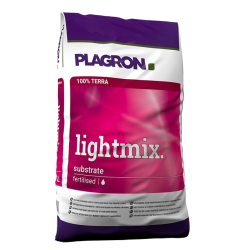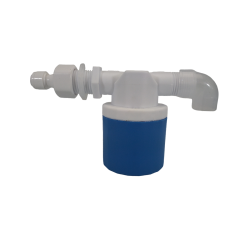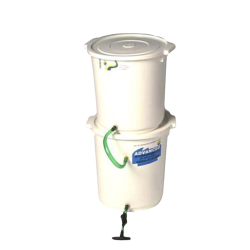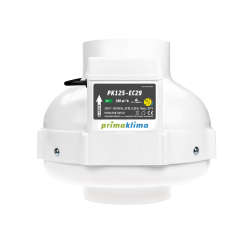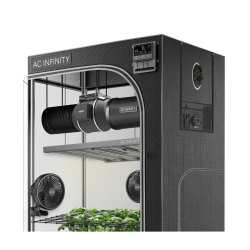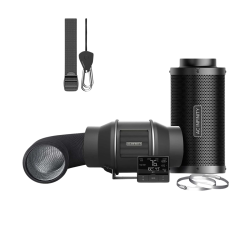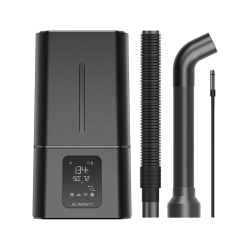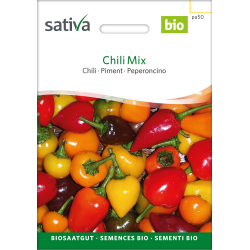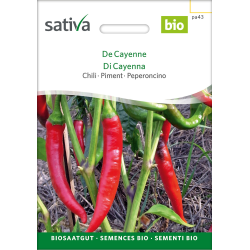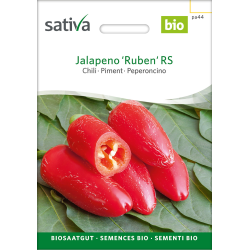Grow Shop
Here you will find everything you need for successful plant cultivation. From seedling to adult plant including further processing.
You can also get advice from our professional team. Call us or come by.
Subcategories
-
Fertilisers / additives
We carry a wide range of professional fertilizers and additives from all major manufacturers.
Biological or mineral fertilizer?
The main advantage of biological fertilizers is the taste of the final product, this is better than mineral fertilizers. The disadvantage is that the yield is not quite as high as with mineral fertilizers, because the plant grows more slowly. In addition, it should be noted that biolgic fertilizers take longer to be absorbed by the plant. Therefore, we recommend beginners to use rather mineral fertilizers, so that they can react more quickly in case of deficiency symptoms of the plant.
Experienced growers can tell which mineral fertilizer was used by the smell of the final product.
-
Lighting
Lighting, along with climate and fertilizer, is the most important thing for successful plant cultivation.
We distinguish between conventional and LED lighting. Both systems have advantages and disadvantages.
The advantages of conventional lighting using sodium vapor is the purchase price. In addition, the waste heat of the system often makes heating unnecessary in winter.
The disadvantages are the relatively high power consumption. Also, a luminaire must be replaced after about 1 year of continuous lighting and the reflector after about 2 years. Also, conventional lighting causes a lot of heat in the summer. The yield is not better compared to the newest LED systems, as it was at the beginning of the first LED lamps.
The advantages of LED lighting is the higher efficiency of the light output compared to the power consumption. The long life of the LEDs and the lower heat generation, lead to the fact that smaller exhaust fans can be installed for ventilation. The biggest disadvantage of LED lamps is the higher purchase price. -
Growboxes
Since there are growboxes the cultivation has become much easier. Because a Growbox is a closed system, where you can store everything; ventilation, lighting and growing system.
There are two different foils for the growboxes: The white foils (Homebox Ambient) and the foils with Mylar-like foils (Homelab, Secret Jardin, Gorilla).
The Mylar-like films have a better reflection value, but this is only better in the first few months than with a white film, because after a few months the water vapor that is excreted by the plants bleaches the film. In addition, the heat distribution is better with the Growboxes with white foil.
The size of the grow boxes depends on the space required by the plants. Sativa CBD hemp plants and CBD seed plants need boxes with a minimum height of 180cm because the plants need more height including the lighting. The Gorilla Boxes which can be raised to 240cm or the Ambient+ are also suitable for this purpose.
For Indica CBD plants and CBD cuttings smaller boxes can also be used.
There are also special box sizes (propagator and clone box) for growing cuttings.
-
Complete Units
For a beginner the best you can buy, everything is included. We recommend complete systems (economy sets) if you dont want to take the trouble to put everything together yourself. A complete system consists of all the basic products you need for cultivation. In addition, we offer a 10% discount on all complete systems compared to the retail sale of the required products. The only thing you have to buy is the soil and the fertilizer. We offer complete systems from size 60x60cm to 240x120cm. Here everybody finds his size. If you want to have a product change at your economy set write us an e-mail or come best by, we advise you gladly.
-
Ventilation
A good ventilation system is the be-all and end-all of a good production plant. If the air is not exchanged correctly, a good yield cannot be expected. In addition, the ventilation system is responsible for eliminating odours and, in the case of larger systems, for the clean supply of outside air. An optimal ventilation system consists of an exhaust air and a supply air. In the case of supply air, it is important to filter the supplied air by means of particle or pollen filters. In the case of exhaust air, the air is filtered by means of activated carbon filters in order not to annoy the neighbours with unnecessarily strong odours. Normally a smaller volume than the exhaust air is measured for the supply air to create a negative pressure in the grow room.
We calculate the size of the exhaust fan with the following formula: Watt-power of the lighting / 2= size of the activated carbon filter + 20% = size of the exhaust air fan - 30% size of the supply air fan
Example: 2 x600 Watt =1200 Watt/2=600m3 Activated carbon filter + 20% =720m3 Exhaust air fan -30% = 504m3 Size of supply air fan
-
Climate Control
The air conditioning technology includes devices that measure and/or influence the climate of a grow room by regulating air, heat and humidity. Air conditioning turns a grow room into a professional facility because it keeps the climate constant as the plants need it. In most cases energy can be saved by its use. As a rule of thumb, the following values are considered ideal:
- Cuttings and seeds: Day phase with 18-22 hours light; 25 degrees soil and air temperature and approx. 80% humidity - in the night phase also 25 degrees
- Plants in the vegetative stage, mother plants: Day phase at 16-20 hours light; 25 degrees air temperature, 60 - 80% humidity - at night phase 16 to 22 degrees
- Photoperiodic plants in flowering stage: day phase in 12 h light; 25 degrees air temperature, 40 - 60% humidity in 12 h light - in night phase 15 to 22 degrees
- Autoflowering plants in flowering stage: day phase at 16-20 h light; 25 degrees air temperature, 40 - 60% humidity - at night phase 18 to 22 degrees
- Cuttings and seeds: Day phase with 18-22 hours light; 25 degrees soil and air temperature and approx. 80% humidity - in the night phase also 25 degrees
-
Watering
Good irrigation can significantly increase yields. The plants love it when they receive a balanced water-fertiliser mixture several times a day. Good irrigation systems give the plants up to 8 times a day in small doses in the phase in which they need the most water by means of drip irrigation. Other systems, such as the Autopot system, are designed so that the plant can take whatever it needs from the nutrient solution.
There are 3 basic systems:
- Passive systems without pump; These passive systems work without pump with very little pressure and only by gravity (Autopot, Big Drippa). The advantage is that they work without electricity, but they are normally only suitable for smaller systems up to 30 plants.
- Irrigation with low pressure (irrigation with PVC pipes); These systems, as the name suggests, do not need high pressure, an inexpensive pump is usually enough to operate this system, they are more suitable for smaller grow rooms of 20-100 plants, because they do not work as accurately as the irrigation with high pressure.
- High pressure irrigation (irrigation with PE pipes); this type of irrigation requires a pressure above 3 bar to open the valves. It is the most accurate of the systems and is particularly suitable for larger grow rooms from 100 plants. It needs a pump that can generate this pressure and preferably a solenoid valve to accurately control the enrolment pressure and prevent water from running out of the tank.
- Passive systems without pump; These passive systems work without pump with very little pressure and only by gravity (Autopot, Big Drippa). The advantage is that they work without electricity, but they are normally only suitable for smaller systems up to 30 plants.
-
Hydrosystems
We carry 3 different hydro systems:
- Ebb and flood coverings: These are the simplest hydro systems, they can also be used as an irrigation system for pots with soil, but can also be filled with expanded clay or slabs.
- NFT systems: The Nutrient Film technology is impressively simple but very efficient. The nutrient solution flows constantly around the roots, at the bottom of the systems there is usually a fleece or root mat to channel the roots. Some systems are filled with expanded clay and others with stone wool culture blocks.
- Aeroponics systems: Aeroponic systems are similar to NFT systems, but they dont need any substrates anymore, the roots hang in the air. This is the high-end version of all hydro systems, practical if you dont want to use substrates like expanded clay, rock wool or cocoserde. But it is also the most demanding method and is not recommended for beginners.
With all hydro systems it should be mentioned that the nutrient solution is a decisive factor, it has to consist of a high quality fertilizer, it has to be kept constant at a pH value of 5.8 - 6.2 and the water temperature must never be above 25 degrees for a long time, because the water then can no longer bind oxygen and the roots start to rot. Used correctly, such a system can achieve record yields.
- Ebb and flood coverings: These are the simplest hydro systems, they can also be used as an irrigation system for pots with soil, but can also be filled with expanded clay or slabs.
-
Harvesting Devices
Many growers do everything right until harvest time. Many harvest too early, they only look at the brown hairs of the flower. A better method is to use microscopes to check whether most of the resin crystals are milky. This is the optimal harvest time.
- A few plants can be harvested loosely by hand with harvest scissors
- From 15-20 plants a Tumble Trimmer or a Master Trimmer Pocket is not a bad investment
- For larger harvests, Master Trimmer or Greenbroz harvesters are a good way to process a harvest efficiently and without much effort. The difference between these two manufacturers is that Master Trimmers process the flowers fresh and Greenbroz machines dry.
All harvesting methods produce trim waste, small leaves and flowers that can be further processed. There are 3 different methods:
- Dry extraction using pollinators from Top Zeef
- Wet extraction with extractor bags, water and ice, the best way is with a bubbleator
- Gas extraction with butane gas or dimethyl ether
- Rosin extraction, extraction by pressure and heat
- A few plants can be harvested loosely by hand with harvest scissors
-
Pest Control
We concentrate in our plant protection assortment on biological means, since we are convinced that one should treat hemp like a food. With chemical pesticides it cannot be avoided that residues remain in the plant.
If biological agents are used correctly, there is no need for a chemical weapon, provided that the plants are well observed and problems are dealt with in good time.
We distinguish between 3 different crop protection groups: Biological sprays (insecticides) against insects, Biological sprays (fungicides) against fungi and living beneficial insects against insects.
Biological sprays (insecticides) against insects:
When using biological insecticides, it is important to know which insect we want to control and how infested it is. It is also important that the treatment is repeated several times to really catch all insects, especially those that hatch after a treatment, because the eggs of the insects are immune to most sprays. Here are a few examples of insects and how to fight them:
- Funeral mosquitoes: weak infestation; control with Solbac, strong infestation with Traunem
- Spider mites: weak infestation; control with Natural, strong infestation by means of combination Natural and Sanoplant, with very strong infestation; a mixture of Natural, Sanoplant and Promanal
- White flies: weak infestation; control with Natural, strong infestation by means of combination of Neem and Sanoplant
- Thrips: Sanoplant
- Aphids: weak infestation; control with Natural, strong infestation by means of combination of Natural and Sanoplant
- Rust mites: Sulfur treatment with sulfur vaporizer
Biological sprays (fungicides) against fungi:
Here we distinguish between preventive and acute treatment. The greatest damage is caused by real and false mildew and mould (Botrytis).
Against mildew:Preventive (at high humidity and high infestation pressure): Fenicur
Acute (if the fungus has already broken out): Before flowering; Airone and Cupromaag
Against mould: Hydroliq
Living beneficial insects against insects:Beneficial insects are a good supplement to biological sprays, for example after a treatment phase, they can be applied like a security in the plant to destroy even the last insects and to prevent the infestation takes over again. It is important that the beneficial insects are not used if the infestation is too strong, as they can then not unfold great effect and are completely overtaxed.
The only exceptions are Solbac (Bacillus Thuringensis) and Traunem (Nematodes) against gnats.
- Funeral mosquitoes: weak infestation; control with Solbac, strong infestation with Traunem
-
Measurements - Analysis
PH and EC measuring instruments are essential for professional growers. A distinction is made between portable and stationary devices. The PH value can also be measured with liquids, but these are not as accurate as devices with electrodes.
Ph-Meter: PH meters are necessary to correctly adjust the PH value of the water. This is necessary because most of the fertilizers the plant needs are available at a value of 5.8 - 6.2. A too high or too low pH value leads to deficiency symptoms in the plant. Acids lower the water to the required level.
EC meter: The salt content in the water is measured with an EC device. Precise fertilization is not possible without an EC device.
The data on the fertilizer schemes of the various fertilizer manufacturers are usually only average values, so fertilizing per EC value is a completely different league. The following values can be remembered as reference values:- On soil: cuttings between 0.8 and 1.2 EC; in the vegetative phase between 1.2 -1.5 and in the flowering phase between 1.5 and 2.0
- On hydro: cuttings between 0,8 and 1,2 EC; in the vegetative phase between 1,2 -1,6 and in the flowering phase between 1,6 and 2,4
It must be taken into account that each variety bears and needs a different EC value. As a basic rule, Sativas need lower EC values and Indicas need higher EC values.
It should also be noted that each water has a basic EC value. Apart from rain, osmosis and distilled water, these waters have an EC value of 0.
- On soil: cuttings between 0.8 and 1.2 EC; in the vegetative phase between 1.2 -1.5 and in the flowering phase between 1.5 and 2.0
-
Substrates
There are 2 basic types of substrates:
- Peat soil: The soil we sell has the advantage over hydro-substrates and other soils from the garden market, which it is always pre-fertilized and with a PH value of about 6.0 is best suited for cannabis. The soil is ready to start immediately. We recommend earth to everyone, from beginners to professionals. Soil also forgives a mistake in fertilization due to its buffer function and is more resistant to heat. The quality of the harvest is usually also better than with other substrates, especially if you are still working with organic fertilizers and soil fungi such as mycorhiza and/or trichoderma.
- Hydro-substrates: The main advantage of hydro-substrates is their higher yield, as the fertilizer can be used more accurately and also with a higher EC value. We do not recommend hydrosubstrates to beginners because a lot has to be considered. A PH and EC device are mandatory. Hydrosubstrates usually have to be prepared (buffered) before use and their PH value has to be adjusted. The most commonly used hydro substrates are coco and stone wool substrates.
-
Pots / Trays / Containers
We have 4 different pot types:
- Square pots: Practical and inexpensive, with matching coasters. Square pots are perfect for the Sea of Green method. We carry them in sizes from 0.5 L to 30 L.
- Round pots: Round pots have a better root growth, because the root can grow better at the edge of the pot. They are mainly used for larger plants, especially on the balcony or outside. Our round pots are between 15 litres and 35 litres in size.
- Superroot Airpots: These Super pots are a further development of normal round pots. The special structure has several advantages: 1. the aeration of the soil is strongly increased, thus the danger of root rot is strongly reduced. 2. new roots are constantly being formed, thus a larger root ball is present, which contributes to an enormous plant growth. Due to their structure, these pots have an increased water requirement than other pot shapes.
- Root pouch pots: Root pouch pots are practical, they are light and their special structure allows the roots to branch out well. This textile structure allows good ventilation and cooling of the substrate. They can be used both indoors and outdoors.
- Square pots: Practical and inexpensive, with matching coasters. Square pots are perfect for the Sea of Green method. We carry them in sizes from 0.5 L to 30 L.
-
Seeds & Cuttings...
We carry all products to successfully produce seeds and cuttings (clones). Here a small 1x1 of the seed and cuttings production:
Seed breeding:
First of all it is important that the seeds are properly stored when you dont need them right away. We recommend to store the seeds in the original packaging or in a quick-release bag in the fridge in a plastic box or in a jam jar together with rice, the rice will remove the moisture from the environment. In this way, the seeds retain their germination capacity.The best way to germinate the seeds is as follows: First place the seeds in several layers of household paper, soak the paper with water and then place it in a well cleaned bowl. The seeds should never be touched by hand, but only with clean or disinfected tweezers. The shell should be kept at 25 degrees, preferably with a heat mat, heating cable and a thermoptimer that keeps the temperature constant at 25 degrees. After 1 - 5 days the seeds are germinated, if they need longer a mistake has mostly happened or the seeds are too old. After germination it is best to put them in Jiffys or Eazy Plugs with the root down and cover them with approx. 5mm Sustrat. Now the moment has come when the seedlings need enough light (in addition to the ground heat). The Flex from SANlight is the best light source, fluorescent tubes are also suitable.
Cuttings breeding:
Cutting cuttings is a small science in itself, just like flower production. First of all you need healthy and pest-free mother plants. For preparation, clean the rearing box well and disinfect it best. When cutting, make sure that a straight cut is made with a scalpel underneath an internode. The cuttings can be placed on Eazy Plug, Speedgrow or rock wool, whereby the Sustrat should be prepared with water and root fertilizer. You can also use a cloning agent on the side of the cut. It is best not to put the cuttings into the prefabricated holes that the cubes of the respective substrates have, but to make your own holes, so the cuttings hold better and the new roots are not damaged. The prospective cuttings need a constant soil and air temperature of 25 degrees and at the beginning an air humidity of approximately 100%, after a few days the air humidity can be reduced to 70%. They love it when they are sprayed every day with a light nutrient solution of Fish-Mix and root fertilizer.
When rearing seeds and cuttings, it is very important to pay attention to hygiene, this is the most important thing for successful rearing. In addition many successful seeds and cuttings breeders pay attention to the times which the lunar calendars indicate to them. A very good calendar is for example the Aussatkalender of Maria Thun.
-
Garden and balcony
Our category with everything you might need for your vegetable garden or balcony. Here you will find seeds, larger greenhouse tents, garden tools and everything you need for growing mushrooms.
-
More Accessories
Various grow accessories and miscellaneous such as CBD, scales, bags, terpenes, CBD flowers, films and nursery supplies.
AC Infinity - Advance Grow Tent System PRO 60x120x180, 3 plant set GrowTechnology Edition
- New
- Out-of-Stock
- New
- Out-of-Stock






























